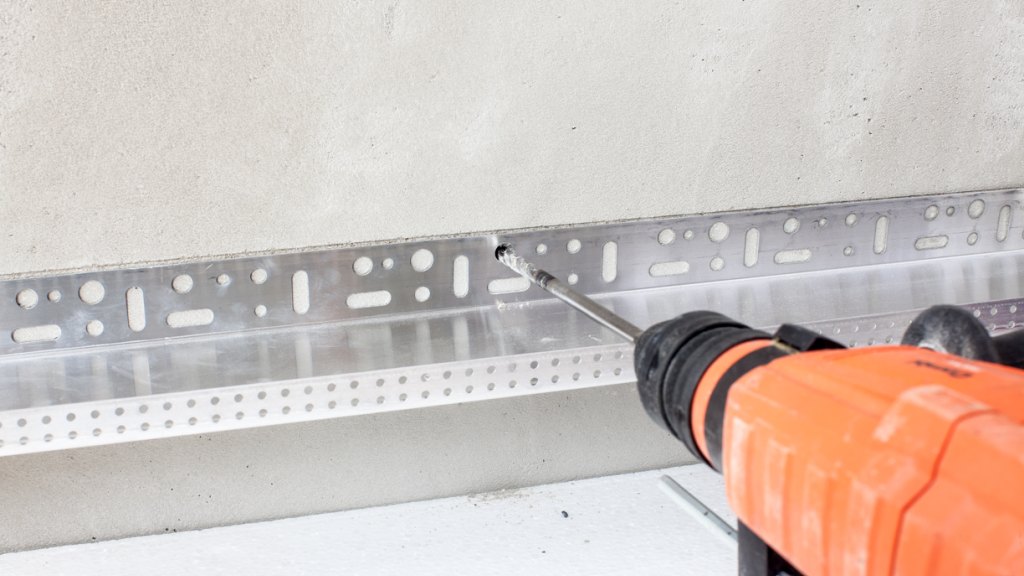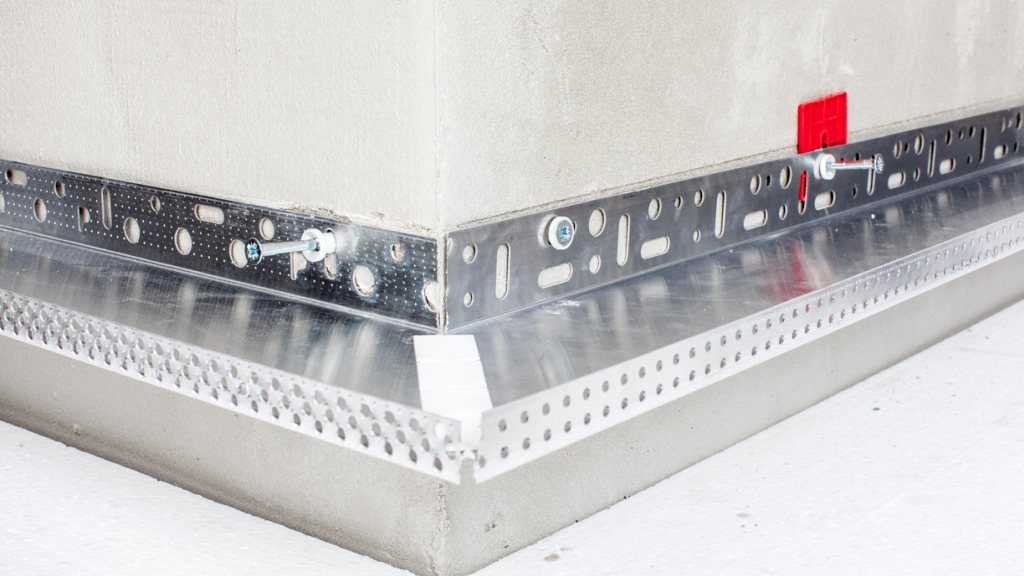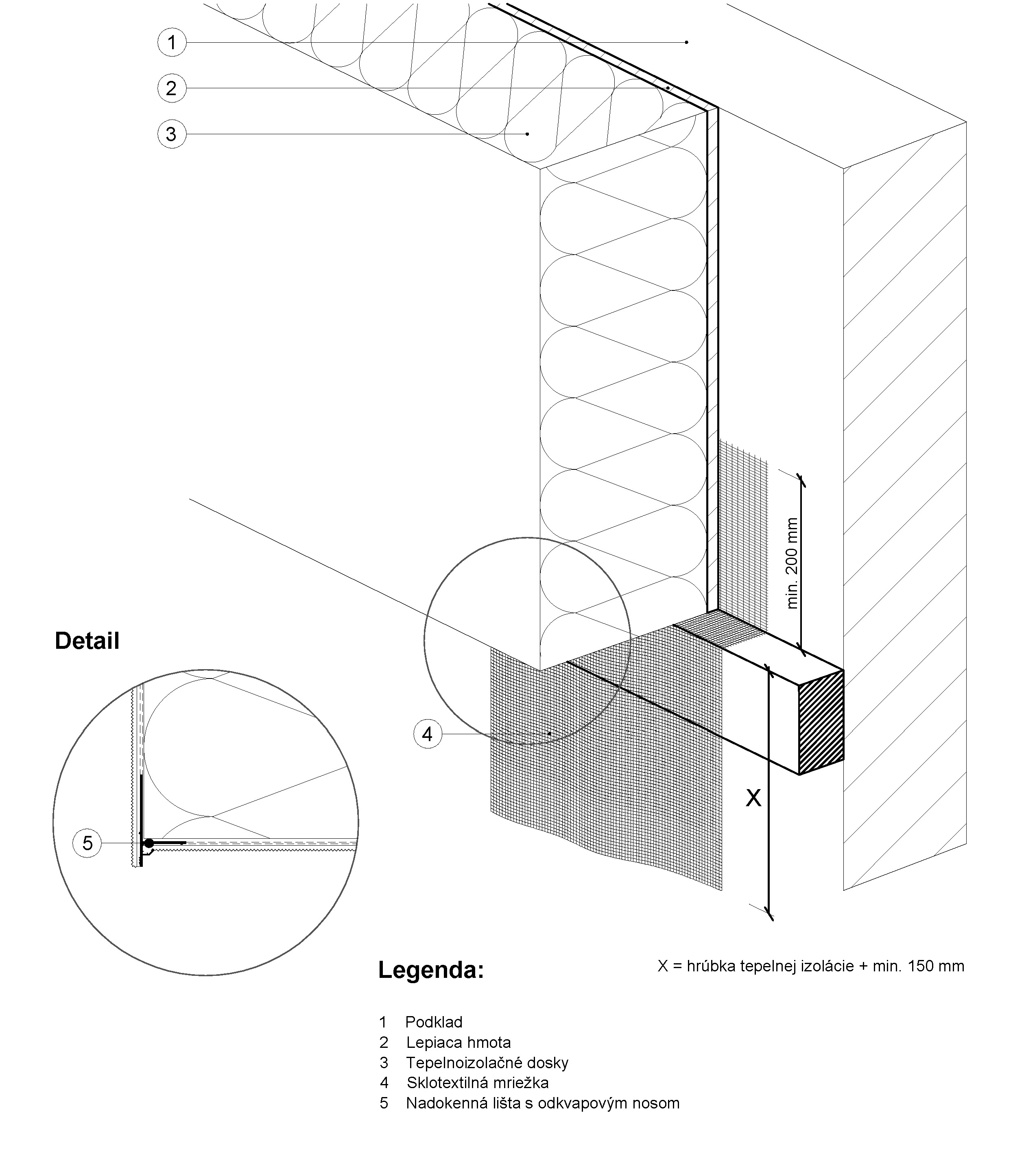


To begin the adhesion of insulation boards, thermal insulation must be installed. You can mount the first row of insulation boards on the aluminum or plastic skirting boards sockets. Alternatively, the insulation can also be installed using a mounting board. The joint between the socket plinth profile and the substrate must be sealed e.g. binder. Width of the socket profile corresponds to the thickness of insulation board. For larger insulation thicknesses use extension or insertion profiles.
Aluminum plinth profiles are still used as a standard. For polystyrene-based thermal insulation systems, a non-perforated (on the bottom part) and perforated slat profile must be used when insulating with mineral wool.Using plastic profiles, you get an aesthetic solution for the detail of the plinth without cracks and thermal bridges.

Install the plinth profile in the exact horizontal position and the desired height on the substrate. Then fix it using screws and coaks at 3 pieces/bm.

To compensate for local inequalities, it is possible to use the leveling pads under the skirting profiles when anchoring the profile.
To simplify the work, corner plinth profiles are recommended in the corner area. Alternatively, you can cut the edges of the skirting edge profiles at an 45° angle. Use joining pieces on the base sections for joining individual pieces of skirting profiles.

On the substrate above the board we apply a full adhesive mortar, into which we push the reinforcement mesh at a height of at least 200 mm from the bottom edge of the next series of thermal insulation boards. The reinforcement mesh is folded over the edge of the heat-insulating boards onto the outer surface of the panels after the boards are glued and the installation board is removed and pushed into the applied adhesive coating. This will subsequently be smoothed. The height of the reinforced mesh must be at least 150 mm. With this socketing method, it is necessary to create a gutter nose at the lower edge of the thermal insulating system (e.g. a drip nose board).

Technical details and their design for thermal insulation systems can be found in the technical details or details page.